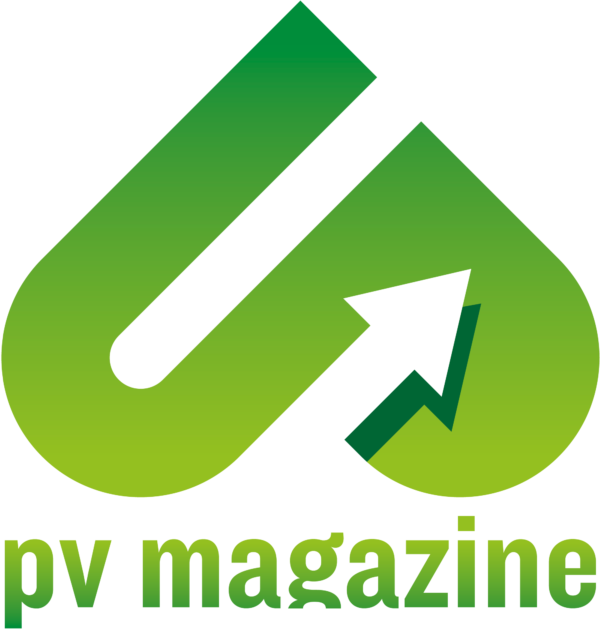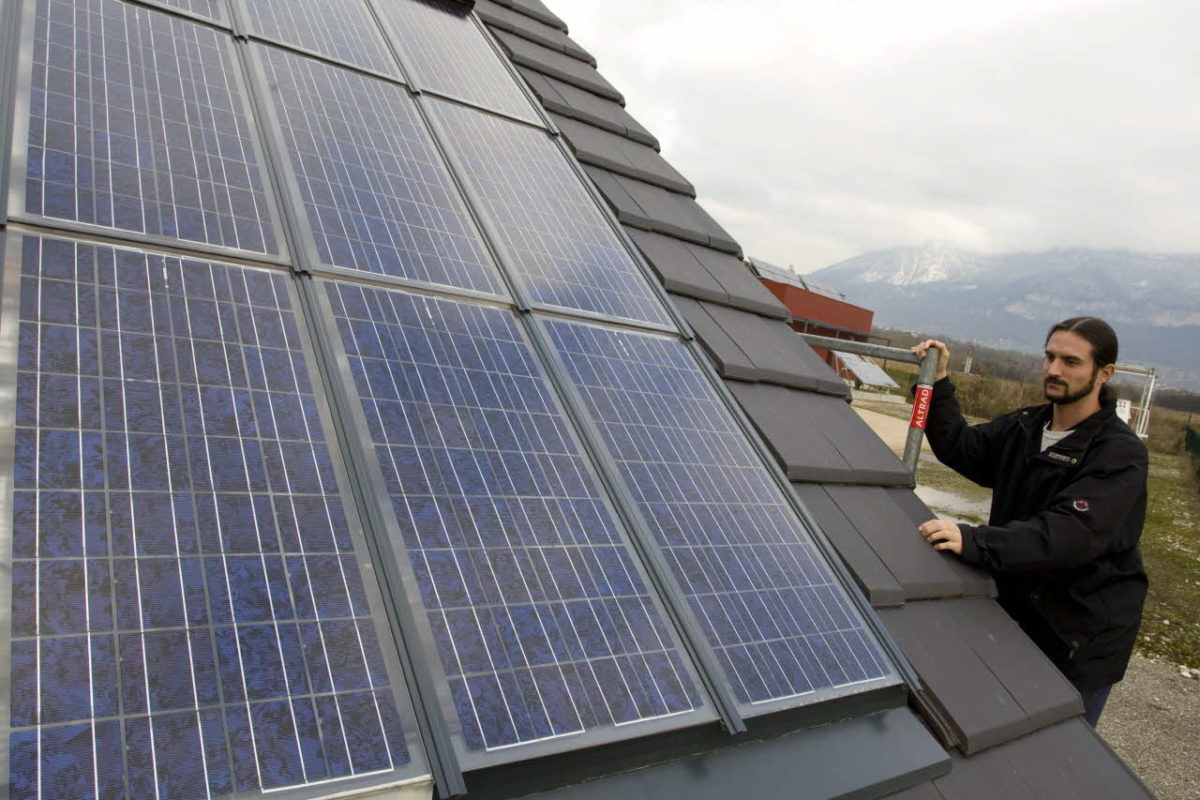In the latest interview of pv magazine’s UP-initiative, circular manufacturing quarterly theme, we spoke to David Pelletier and Luc Federzoni of French state research body the Commissariat à l'énergie atomique et aux énergies alternatives (CEA). Pelletier is project manager at the CEA-INES organization, which includes France’s Institut National de l’Energie Solaire, and Federzoni is concerned with strategic programs at the CEA.
The two professionals discussed the EU-backed project titled Implementation of a circular economy based on recycled, reused and recovered indium, silicon and silver materials for photovoltaic and other applications – Cabriss for short – which ran from 2015-18 with the backing of EU research body Horizon 2020. The interview complements the Making solar sizzle article, which ran in the July edition of pv magazine.
pv magazine: What is the Cabriss project and how did it come about?
David Pelletier and Luc Federzoni: Cabriss stands for the Implementation of a circular economy based on recycled, reused and recovered indium, silicon and silver materials for photovoltaic and other applications. It [was] Horizon 2020 project-funded by the European Commission and has an overall budget of €9.3 million.
The aim was to develop a circular economy within the PV industry, particularly focused on waste manufacturing and end-of-life modules. It complements the Circusol project, another Horizon 2020-funded project, the goal of which is to formalize the re-use, repair and refurbishment value chains in the PV industry. It both develops and demonstrates recycling and recovery potentials and product-service system (PSS) business models for the solar power sector.
Circular manufacturing
 This quarter, pv magazine is focusing on circular manufacturing as part of our UP initiative. Read more on the topic, including why doughnuts are the new green, how you can make solar sizzle and how a German start-up is using circular solar to address energy poverty. Our recent Virtual Roundtable event also addressed some of these issues. Look out for more circular solar stories in the coming months.
This quarter, pv magazine is focusing on circular manufacturing as part of our UP initiative. Read more on the topic, including why doughnuts are the new green, how you can make solar sizzle and how a German start-up is using circular solar to address energy poverty. Our recent Virtual Roundtable event also addressed some of these issues. Look out for more circular solar stories in the coming months. Cabriss kicked off in 2015. What has been learned?
We have developed the technologies required to separate, purify and recycle PV waste from both manufacturing and end-of-life modules. A particular focus has been placed on the delamination of end-of-life modules, in order to minimize the cross contamination between the modules’ materials; and also to increase the technical and economic values of these recovered materials for re-use applications.
We have demonstrated that over 95% of materials like silicon (Si), aluminum, silver, indium and EVA [ethylene vinyl acetate] from both silicon-based and thin-film modules can be recovered. So, from a technical point of view, the main obstacles have been overcome. Nevertheless, it is difficult to find relevant business models due to the fact that recycling volumes are still small. These are increasing, however, and will become interesting from 2025-2030 onward.
EVA has typically been the most challenging part of module recycling because of the glues involved. How have you overcome this?
EVA can be very challenging for opening the PV panels. We succeeded in this step because one of Cabriss’ partners has developed a water-based process to delaminate end-of-life c-Si modules. Due to its concept, this process allows the recovery of cells and EVA, which is well detached from the glass. An additional step then allows for the detachment of the EVA from metals, and thus ensures the separation and recovery of all materials constituting a module.
One of the goals of circular manufacturing is to reuse recovered materials from modules. However, concerns exist over the quality or reliability of second-hand materials. How can these be alleviated?
Demonstrating results is key. We’ve managed to re-manufacture cells based on recycled materials following two routes: the standard route and an innovative route. The standard route means manufacturing PV cells and modules using the most prevalent industrial technology – Al-BSF (aluminum Back Surface Field) – by substituting recovered material [for] virgin material, i.e. using the recovered secondary feedstock. Following this route, several cells and modules have been produced by Cabriss’ partners using recycled Si with an efficiency of 18.5%, which is very close to the reference cell’s 18.9% efficiency. Some results have been published and [were] presented at the 2017 EU PVSEC [conference].
Via the innovative route, we have also developed protocols to measure the quality of recycled materials and their suitability for making new solar cells. We still haven’t reached a standard to re-manufacture cells based on recycled materials but we have precisely managed to industrialize the re-use of the materials for other sectoral applications.
What needs to be done to reach the required standard?
Here is the challenge, because we do not have a fixed standard. The standard is quickly evolving, following the evolution of cell and module technologies. The specifications for silicon, for example, have greatly evolved between the Al-BSF (2017) and HJT [heterojunction] (2020) technologies that are currently emerging on the market. An additional purification step would be required to achieve the desired standard. This would be possible if the price of the raw material is not too low. This last point is particularly true for silicon but not for silver or indium, where standards can be met depending on your recycling process.
What are the other sectoral applications you refer to?
It is important to understand that a circular economy does not necessary mean complete reuse in the PV industry. The crucial point is to recover materials and re-inject them into specific industries where secondary raw materials are compatible, to develop synergies. Some examples for silicon are batteries; high-value, Si-based alloys; or H2 [hydrogen] production applications.
As Pierre Verlinden, MD of solar consultancy Amrock, highlighted during pv magazine’s recent Virtual Roundtable event, at 1 TW, the PV industry will account for 94% of today’s silver market. As such, reusing or replacing silver is of particular interest. Can silver be easily extracted and recycled for new solar modules?
Yes, silver can be easily extracted and recovered from PV wastes when cross-contamination of materials are limited during the delamination and cell recovery steps. In Cabriss, we have developed new conductive inks and pastes using recycled silver. Initial results have been very positive. However, validation is still necessary to industrialize such inks and, more precisely, to stabilize the process of the formulation of inks and pastes, in order to lead to stable and reproducible products.
Several innovative, resource-saving production technologies have reportedly been developed for wafers and solar cells. What are they and what stage are they at?
Using innovative routes, some Cabriss partners have developed new technologies mainly using Si-kerf [PV manufacturing waste] to produce low cost Si substrates. These include Si-ingots made from recycled Si via a hot-pressing process. The results from this technology are excellent as we can directly produce standard-size substrates. A new cell technology has also been developed which uses a combination of this low cost substrate and highly efficient epifoil as the active material. Further R&D is still needed here, but feasibility has been demonstrated on small solar cells.
How do you approach the issue of the longevity of PV panels versus technological advancements, when designing recycling and repurposing systems?
Of course, PV technology has evolved over the [recent] decades, but the architecture of c-Si PV panels [which occupy the major market share] has remained the same: a sandwich of silicon cells with glass and a backsheet polymer. This point is important and facilitates the development of recycling processes. Materials composition has evolved with more or less silicon or silver, and with more environmentally friendly backsheets which do not contain fluoro-compounds. Thus, the processes developed under Cabriss have been designed to open the sandwiches and recover the materials. To avoid some environmental issues, with fluor emissions, for example, we have favored non-thermal and non-chemical processes like water or light-based processes.
What do you see as the main barriers to – and opportunities available from – your research, to the adoption of circular solar principles?
One of the main obstacles to reaching circularity is the fluctuating cost of raw materials, which can put a lot of pressure on the economic viability of the recycling process if large volatility [is] observed.
Overall, we are convinced that the real opportunity to launch the market will be related to legislation, i.e. an eco tax and a carbon tax need to be rapidly introduced. We are also convinced that industrial symbiosis is still not being investigated and will be an important way to allow recycled material to circulate for other applications. For example, symbiosis between the PV industry and TV panels, where technical challenges to recover materials are very closed. Cabriss has identified some applications but there is still much work to be done here. We notice that the slow ramp-up of this market does not help to attract industrial investors. So, we also still need public support to cross the ‘Death Valley’.
Three concrete actions that need to be taken today are:
1: Other businesses for which recycled material could have a real advantage need to be investigated, i.e. glass, aluminum and silicon. A circular economy does not mean … full reuse in the PV industry – we need to find other industries and markets where secondary feedstock could be reused.
2: Public funding needs to be invested in large scale pilot lines that allow the separation of modules.
3: The eco tax needs to be modified to quickly reach the profitability of the operators of … recycling, which will [enable] triggering of a profitable circulation of the materials.
What are the next steps for Cabriss?
We are looking to intensify the eco conception of solar PV to anticipate, long in advance, the retrofitting or recycling of a new generation of modules; to develop technologies to design the next generation of cells and modules [with the aim being] to recycle 100% of a module’s materials, including the glass, the backsheet and the EVA encapsulants; [to pursue] high TRL [technology-readiness level] developments; [to consolidate] key industrial and associated processes; [to] contribute to the evolution of WEEE [waste electrical and electronic equipment] legislation; and [to] develop deeper symbiosis with other industries, e.g. flat TV panels.
This content is protected by copyright and may not be reused. If you want to cooperate with us and would like to reuse some of our content, please contact: editors@pv-magazine.com.




5 comments
By submitting this form you agree to pv magazine using your data for the purposes of publishing your comment.
Your personal data will only be disclosed or otherwise transmitted to third parties for the purposes of spam filtering or if this is necessary for technical maintenance of the website. Any other transfer to third parties will not take place unless this is justified on the basis of applicable data protection regulations or if pv magazine is legally obliged to do so.
You may revoke this consent at any time with effect for the future, in which case your personal data will be deleted immediately. Otherwise, your data will be deleted if pv magazine has processed your request or the purpose of data storage is fulfilled.
Further information on data privacy can be found in our Data Protection Policy.